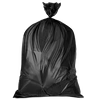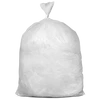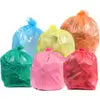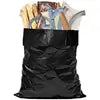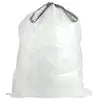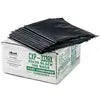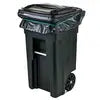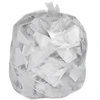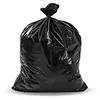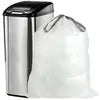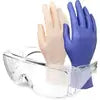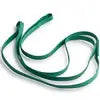Source: Vladimir Sukhachev/Shutterstock
Most people have a basic idea of what goes in the trash and what’s recyclable. However, there are all kinds of special cases, like how to properly dispose of light bulbs, where you might be left scratching your head.
Are light bulbs recyclable? They’re made mostly of glass, so they should be, right? But they also contain parts that aren’t glass, so are they trash? It can all get a little confusing.
The answer depends on what kind of light bulbs you have, as well as the rules of your local waste disposal service. Here at Plasticplace, we’ve never been afraid of a tough waste disposal dilemma — so let’s talk about some bright ideas for how to properly dispose of light bulbs.
Types of Light Bulbs (and How to Dispose of Them)
First, determine what kind of bulb you need to throw away. Most light bulbs in use today are one of four kinds, and each has to be disposed of in a different way. Here’s what you need to know about each one.Incandescent Bulbs
These are the common and inexpensive clear or white glass light bulbs that most people are familiar with. They’re the easiest type to dispose of, but they’re unfortunately not recyclable due to the wire filaments that power them.
Instead, you’ll need to throw incandescent light bulbs away with your regular trash. When you do, however, you should put them inside a container like a used cardboard box to protect them. Remember that a waste collector probably won’t be aware that fragile glass bulbs are inside the bag, especially if you use black garbage bags. It’s important to pad the bulbs so they don’t shatter and potentially cut the person collecting your garbage.
Halogen Bulbs
These bulbs are widely used in vehicle headlights and outdoor lighting, and you can usually — though not always — recognize them by their domed shape and silvery appearance. Like incandescent bulbs, halogen bulbs have a filament inside them that makes them non-recyclable.
Fortunately, you can place halogen bulbs in your regular household trash, protecting them with cardboard or cloth if necessary. Halogen bulbs tend to be more durable than incandescents, but there’s no harm in staying on the safe side.
CFL Bulbs
Compact fluorescent light bulbs (CFLs) are spiral-shaped high-efficiency light bulbs, and they come with some special warnings for disposal. That’s because each CFL bulb uses mercury vapor to create its light. The amount of mercury is very small, but the bulbs are still nonetheless considered hazardous waste. That’s part of why they’re gradually being replaced by LEDs.
Don’t put CFL bulbs in any kind of curbside bin, whether it’s recycling or garbage. Instead, look online for a safe place to recycle CFL bulbs. Check Earth911 to find CFL recycling near you. Many different hardware stores and battery stores offer the service, and it’s free! Use Rubber Bands for Your Trash Can to Keep Your Bag from Slipping
Source: AnastasiaPetropavlovskaya/Shutterstock
LED Bulbs
Light emitting diodes (LEDs) are known for their extreme longevity, but they do still sometimes need replacement. Fortunately, they contain no toxic chemicals and are safe to put in your garbage. They’re also more durable than other bulbs, although it’s still a good idea to protect them.
While you can’t recycle LEDs in a curbside single-stream bin, some recycling centers will take them, as will some hardware stores. As LEDs gain popularity, we’ll hopefully see more options emerge for recycling them.
What If the Bulb Is Broken?
A broken incandescent bulb or LED bulb is no big deal. Make sure all of the glass is cleaned up, and then place the pieces in a cardboard box and seal it to make sure they don’t cut anyone. You can either place this box inside your trash bag or put it on the curb separately if your city allows it. Tape the box shut, and consider adding a note identifying it as broken glass.
If you don’t have a box on hand, wrapping the broken glass in a heavy cloth can work in a pinch. It’s a good idea to place the garbage bag inside a larger, thicker bag — such as a recycling bag — if you choose this option. A broken CFL bulb or light tube requires some special caution because of — you guessed it — the mercury content. If it happens, there’s no need to panic — just follow the EPA’s CFL bulb cleanup instructions. Shop Recycling Bags for Your Home Here
Souce: Dmytrenko Vlad/Shutterstock
We hope you found this article illuminating. (Had to get one more light bulb pun in there!) For bags that can stand up to broken glass and more, check out Plasticplace’s selection of extra thick garbage bags. And for everyday trash bags that offer a perfect fit on your Simplehuman® trash can, make sure to see our Simplehuman® garbage bags too!





